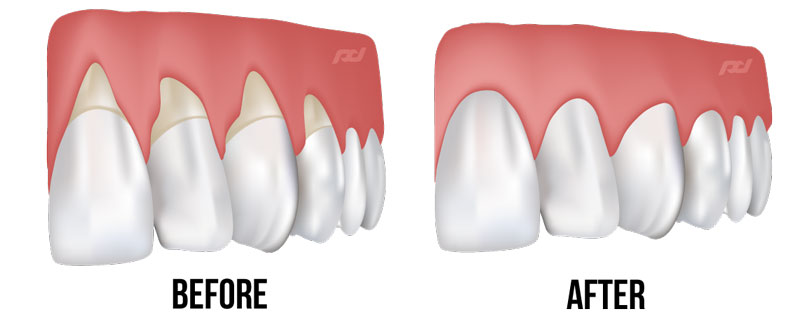What is gum grafting?
Our teeth are embedded in bone, which is encased in the gums. Our gums support and protect our teeth. Think of the gums as the skin of your mouth; they’re a barrier that protects your bones against bacteria and wear and tear. As long as you take proper care of your teeth, your gums will be fine. However if they recede, you may need a gum graft.
Why are my gums receding?
Gum recession is a fairly common problem, affecting 4-12% of adults. It often goes unnoticed until it’s very severe, which is another reason why you should maintain your regular dental checkups. There are many things that can cause the gum line to recede, such as;
- Periodontal disease
- Genetics
- Poor oral hygiene
- Teeth grinding
- Hormonal changes
- Misaligned teeth
- Diabetes
- Poor brushing technique
- Tongue or lip piercings
When the gums recede, they pull away from the tooth, causing the tooth to look much longer. If left unchecked, gum recession could expose the root of the tooth. This opens the door to a host of issues. At first you’ll experience sensitivity to heat and cold, then you’ll start to experience bone damage which eventually results in tooth loss.
What is gum grafting?
There are three different types of gum graft. The most common is a connective-tissue graft. A flap is cut in the roof of the mouth, which exposes the underlying connective tissue. Some of this connective tissue is removed and stitched to the receding gum line, and then the flap is closed.
Another type of gum graft is called a free gingival graft. It’s similar to the connective-tissue graft, but instead of using the underlying connective tissue, the free gingival graft simply takes some tissue directly from the roof of the mouth. This tissue is then attached to the affected gums. This process is used more often when people have thin gums, since the thicker tissue helps to enlarge the gums.
The final gum graft method is called a pedicle graft. This is only possible when the person has a lot of gum tissue near the affected tooth. A flap is cut, stretched over the exposed root, and sewn in place while still attached.
Some dentists may use a tissue bank instead of from the roof of the mouth. And some use tissue-stimulating proteins to encourage the gums to grow. Your dentist will determine the best treatment for you, based on the state of your gums. If you’ve noticed your gums receding, set up an appointment at Dr. Chauvin’s office!


